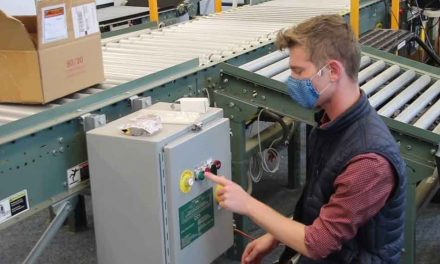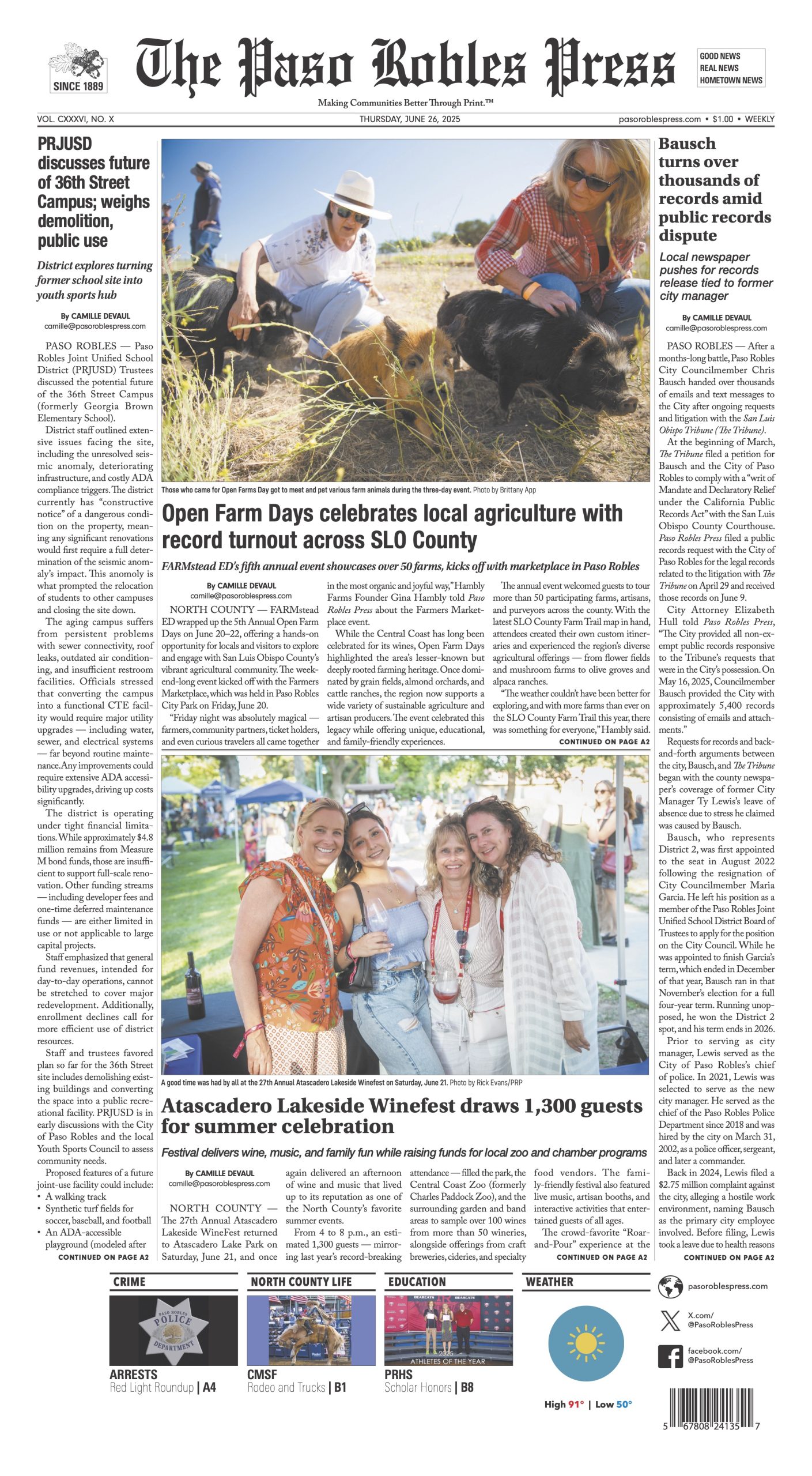Stay cool, stay hydrated, and stay connected as temperatures soar through the holiday weekend
SAN LUIS OBISPO COUNTY — As a heat wave with temperatures predicted to reach as high as 112 degrees begins in some areas of San Luis Obispo County, the Public Health Department encourages residents to protect themselves from heat-related illness and to check on those who may be especially at risk. This includes children, the elderly, people with health conditions, and people who work outdoors.
“Staying cool isn’t just about comfort: heat-related illness can be very serious and even deadly,” said Dr. Penny Borenstein, County Health Officer. “This is true for our most vulnerable neighbors and even for otherwise healthy people who work or exercise outdoors in the heat.”
To reduce the risk of heat-related illness, health officials advise staying cool, staying hydrated, and staying connected during extreme heat waves.
Stay cool:
• Stay in air-conditioned buildings as much as possible. If you do not have air conditioning at home, consider visiting air-conditioned public places like libraries, malls, or cooling centers. Even a few hours of air conditioning can help your body cope. While fans can provide comfort, they are not effective at preventing heat-related illness when temperatures reach the high 90s or above.
• Avoid exercising or working outdoors during the hottest times of day. Take advantage of cooler early morning and later evening hours. If you must exercise or work outdoors in the heat, pace yourself and take frequent breaks.
• Wear lightweight, light-colored, loose-fitting clothing. Outdoors, wear a wide-brimmed hat.
• Take cool showers or baths. Keep a spray bottle of water in the refrigerator to spray yourself with cool water if needed.
Stay hydrated:
• Drink more water than usual. Don’t wait until you are thirsty to drink more water.
• Avoid alcohol and sugary beverages. Drink cool water instead.
• If you are working or exercising outside, drink two to four cups of water per hour.
Stay connected:
• Check on neighbors, family, and friends who are especially at risk. This includes children, the elderly, people with health conditions (including mental health conditions), people who work outdoors, and people who do not have access to air conditioning. If you are at risk, ask someone to check on you.
• If you must work or exercise outdoors in the heat, use a buddy system. Monitor your buddy for signs of heat-related illness (see below) and ask them to do the same for you. If you see signs of illness, stop work or exercise and move to a cooler environment.
• Remember to check on pets. Pets can get dehydrated quickly, so give them plenty of fresh, clean water. Make sure they have a shady place to get out of the sun, be careful not to over-exercise them, and keep them indoors when it’s extremely hot.
• Never leave people or pets in closed, parked cars.
• If you see signs of heat-related illness, take action immediately.
When the body becomes too hot and is not able to cool itself, risk increases for heat exhaustion and heat stroke.
Heat exhaustion symptoms include:
• Heavy sweating
• Weakness
• Cold, pale, and clammy skin
• Fast, weak pulse
• Nausea or vomiting
• Fainting
Heat stroke symptoms include:
• High body temperature (above 103°F)
• Hot, red, dry or moist skin and NOT sweating
• Rapid and strong pulse
• Confusion and possible unconsciousness
If you see signs of either illness, immediately move the person to a cooler area to lie down and rest. Cool the person with a cool (not cold) shower, bath, or wet cloth.
In the case of heat exhaustion, the person may sip cool water. If the person vomits repeatedly, seek medical attention. Most people recover from heat exhaustion without medical attention. In the case of heat stroke, remember: heat stroke is a medical emergency. Call 911 immediately or ask someone to call 911 while you focus on helping the person cool down. A person suffering from heat stroke should not drink liquids.













